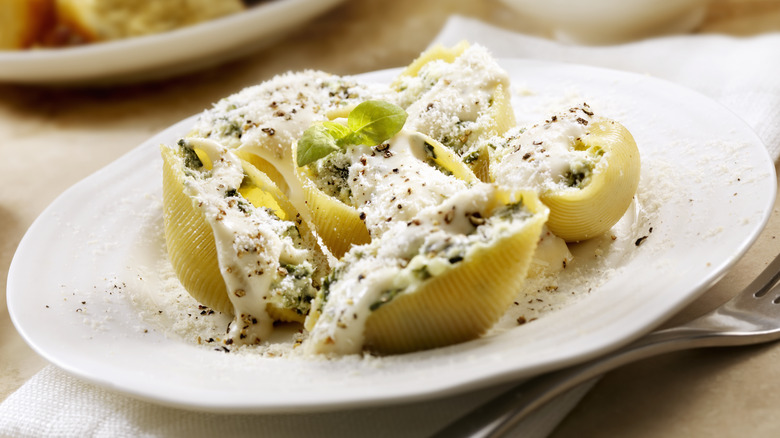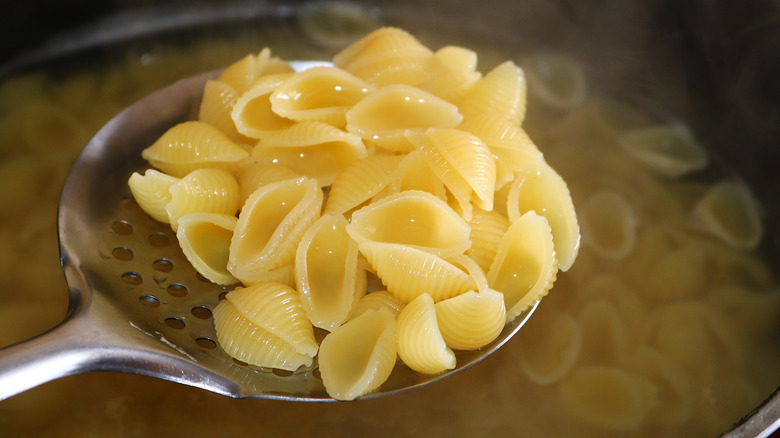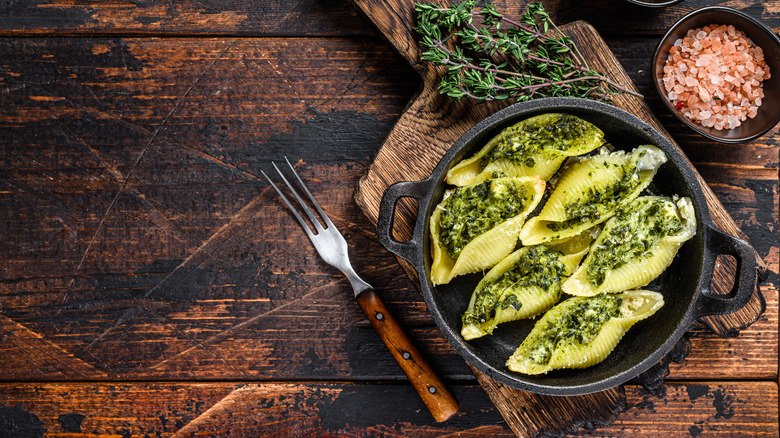The Common Mistake Most People Make With Stuffed Pasta Shells
Contrary to widespread misconceptions about pasta growing on trees, the beloved pasta shells (or conchiglie) actually made their debut after the Industrial Revolution, when steam power aided the growth of factory-made noodles. Through this efficient process, new varieties of pasta shapes exploded onto store shelves. Thus pasta shells were born. They are now commonly stuffed for a vibrant week-night (or any night) meal that sings with the bright flavors of Italy. Unfortunately, a lot of us are making a recurring mistake when preparing this comforting dish.
It all comes down to cooking times and, in particular, the cooking time of the shells before stuffing. Once baked, the pasta shells should be perfectly cooked, but regrettably, they are commonly too soft. To avoid this, make sure you are cooking your shells just slightly before they are al dente. It's seriously as simple as that. Goodbye, soggy pasta — it's time to make this dish how it should be enjoyed.
Just before al dente
Al dente refers to the tender texture pasta reaches once cooked for a set time. In other words, it's still got a little bite to it. If this bite terminology is confusing, you can tell if a noodle is al dente as it'll have a "white ghost, a tiny spot of not-quite-rawness" at the pasta strand's core. Pre-cook your pasta shells just before they are al dente, so 1-2 minutes less than specified on the packet. It can feel tempting to cook it just a little longer, but trust in the process. It will reach that optimum texture once it's baked in the oven.
This is easy enough to explain, but breaking the habit of leaving your pasta unattended while it cooks proves to be more challenging than it appears. Instead of relying on your spidey senses to tell you when the pasta is al dente, set a timer. If you like a crispy top, Yotam Ottolenghi suggests grilling the shells for 4-6 minutes before serving. This will give you a superb range of pasta textures, from crunchy on top to soft and bouncy below.
A stuffed pasta shell connoisseur
To upgrade to the stuffed pasta shell connoisseur title, there are a few more things to be aware of. A traditional pasta shell filling is mixing other ingredients with ricotta, but removing any excess moisture from the ricotta before creating your filling is essential. This could, otherwise, dilute the dish's taste and compromise flavor. You can remove this moisture in 5 minutes — just spread the ricotta out on a baking tray between sheets of kitchen towel.
This additional moisture is also common when using spinach in the stuffing mixture. Once you've boiled the spinach, wrap it tightly in a kitchen towel and squeeze out all the excess liquid. This is one of many common mistakes when cooking spinach. If you like to save time in the kitchen, you can always construct the shells a few hours before serving and keep them refrigerated. If you're feeling organized, you can always freeze the stuffed shells and cook them from frozen when you want them.
The most common mistake when preparing stuffed pasta shells is simple to rectify — ensure you vigilantly monitor those playful noodles while they simmer. You'll be surprised how the improvement in texture elevates the whole dish.


